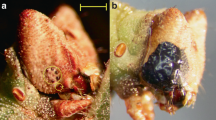Abstract
Hymenopterans have long been shown to choose colours by means of the spectral distribution and independently of the intensity (true colour vision). The same ability has only very recently been proven for two butterfly species. We present evidence for the existence of true colour vision in the European hummingbird hawkmoth, Macroglossum stellatarum. Moths were trained in dual-choice situations to spectral lights of a rewarding and an unrewarding wavelength. After training, unrewarded tests were performed during which the intensities of the lights were changed. The results confirm that the species has three spectral receptor types and uses true colour vision when learning the colour of a food source. If colour vision is not possible since only one receptor type is receiving input from both stimuli, the moths learn to associate some achromatic cue correlated to the receptor quantum catch, with the reward. The moths learn spectral cues rapidly and choose correctly after one to several rewarded visits even when trained to different colours in sequence.
Similar content being viewed by others
Author information
Authors and Affiliations
Additional information
Accepted: 24 February 1999
Rights and permissions
About this article
Cite this article
Kelber, A., Henique, U. Trichromatic colour vision in the hummingbird hawkmoth, Macroglossum stellatarum L.. J Comp Physiol A 184, 535–541 (1999). https://doi.org/10.1007/s003590050353
Issue Date:
DOI: https://doi.org/10.1007/s003590050353




